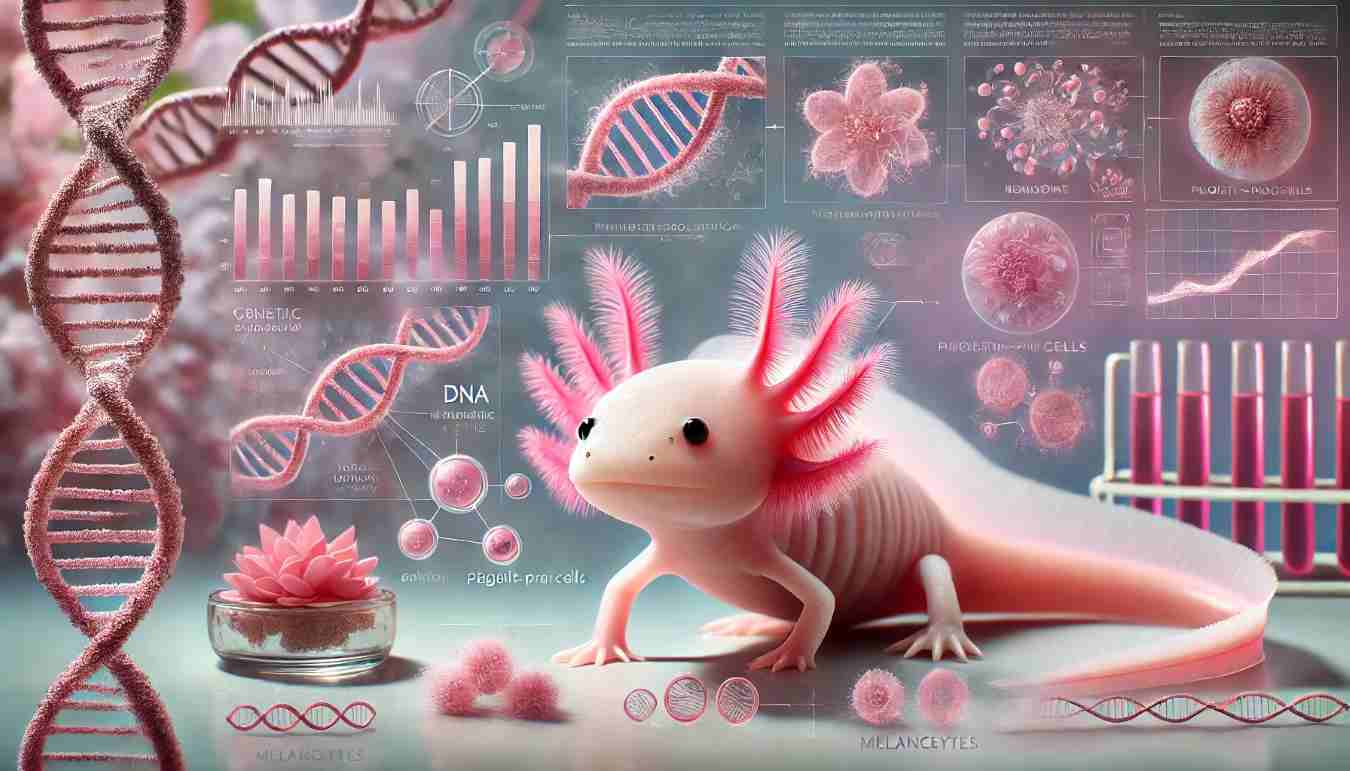Exploring the Science Behind the Pink Axolotl Color

Axolotls, those fascinating aquatic creatures, have long captivated the interest of both scientists and hobbyists alike. Known for their regenerative abilities and distinct appearance, the pink axolotl, or Ambystoma mexicanum, is particularly intriguing. Their characteristic pink or “leucistic” color, which makes them stand out from other species of axolotls, has sparked many questions about the biology and genetics behind this unique trait.
The Origins of Axolotl Coloration
Axolotls are endemic to the lakes of central Mexico and predominantly associated with the regions of Xochimilco, and it is identified for its powerful regenerative functionality. Axolotls come in all sorts of colours, however, the best-known and most popular one for aquarium lovers is the pink axolotl or the leucistic axolotl. But what actually does is responsible for this pink color?
Axolotism coloration depends on the pigments that are acquired from genetics. In the wild axolotls have different hue they are much darker colour, sometimes more like mud brown or some kind of grayish shade that makes them almost invisible in the water. It also assists them in camouflage in their environment that is: water. But the pink axolotl is genetic produced and through breeding exercise where the pigmentation genes of the axolotl has been changed over generations.

Genetic Factors Behind Pink Coloration
It is for this reason that the color pink in axolotls is a consequence an aspect of genetic mutation known as leucism. Leucism is a skin disease, which is characterized by decrease in pigmentation resulting in pale or white features. However care should be taken in differentiating between leucism and albinism. Albinism involves complete absence of pigmentation while leucism is characterized by loss of skin pigmentation owing to loss of melanin but eyes retains its normal colour Albinos have reddish eyes while pink eyed in this case is axolotl has normal black eyes but pink skin due to leucism.
A study done on axolotls gave pink colors to axolotls due to suppression of melanin, the compound that forms deeper shades in skin. This mutation is done by special genes that are responsible for the pigment cells known as melanocytes. When those cells produce little melanin, the outcome is the pale, nearly through pink skin color of the axolotl.
How Selective Breeding Contributes to the Pink Color
The ability to selectively breed axolotls is critical in the development of the pink axolotl due to an explosion of this subspecies. However, to the end of the 19th and early 20th century amateur researchers and enthusiasts began to attempt to breed for axolotls for a lighter color pattern. Due to continued selective breeding, the leucistic variant has become the dominant form of the axolotl in captivity at present. Since only persons with lighter pigmentation are used for breeding, the breeders have developed the pink axolotl.
Leucism is just one genetic factor affecting axolotl coloration; other genes also exist. For instance, the normal morph is always dark, but other colour morphs are obtained by mutation, including gold albino, melanism (black), and copper morphs.
The Role of Pigments in Axolotl Skin
The pink color of axolotls comes from a combination of factors, primarily the absence of darker pigments like melanin. Melanin is the pigment that usually gives animals their darker tones, like browns or blacks, and in axolotls, there’s much less of it, giving them their signature pale pink look.
But it’s not just melanin at play. Other pigments, like carotenoids (which are often found in plants and algae), can also influence their color. These pigments can give animals orange or pinkish hues, although in axolotls, they’re not as dominant as they might be in some other creatures. Still, carotenoids likely contribute to the softer shades of pink that you see in their skin. So, it’s a combination of reduced melanin and a touch of carotenoid influence that gives these fascinating creatures their unique coloration.
The Influence of Environment and Diet
Axolotls get their pink color mostly from their genes, but the environment and what they eat can also affect how intense that pink looks. For instance, if an axolotl eats foods that are rich in carotenoids (the same pigments that give carrots their color), their pinkish hues can actually get brighter. Some people who keep axolotls feed them these kinds of foods to make their colors pop more.
Things like water quality and light can make a difference, too, though it’s usually not super dramatic. For example, axolotls kept in low-light areas might look a bit paler, but it’s not a huge change—especially for the leucistic (pink) ones. They’re less affected by lighting compared to those with darker colors.
The Genetics of Leucism: A Closer Look
Leucism in axolotls is controlled by multiple genetic factors, not just a single gene. Studies show the leucistic trait is recessive, meaning both parents must pass on the gene for the axolotl to show leucism. The genetic mechanisms behind leucism are still unclear, but it’s believed a mutation in a pigment-producing gene causes less melanin production.
This mutation makes the axolotl’s skin pale or pink, but its eyes stay dark due to other pigments. Axolotl color is influenced by genetic mutations, and breeding has led to more color variations in captive axolotls. Common axolotl types in the pet trade are wild-type, golden albino, and leucistic, though rarer forms, like black and copper axolotls, exist with unique colors.





